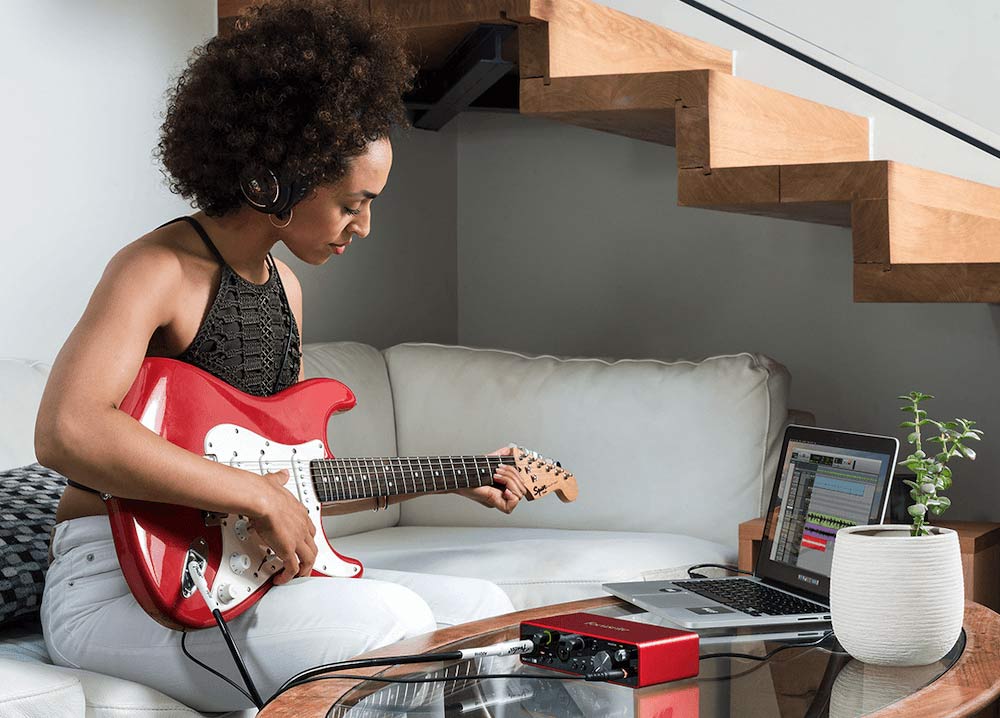An audio interface is that little box you often see on a home Producer’s desk. The USB microphones and instruments plug into it and it connects to your computer (usually via USB). This allows you to record sound into your digital audio workstation.
Trying to make music without an audio interface is very difficult. Why?
Well, the sound card in your computer is technically an audio interface, but it’s not enough. It’s what they call “consumer-level sound,” so it’s not the quality you need. Plus, the microphones on computers are usually pretty bad, not to mention there’s no way to connect an instrument cable.
Even though people have recorded entire songs on an iPhone, you can’t rely on just your phone or computer to record high-quality songs. You need non-delayed live monitoring, playback, and preamps, which increase the loudness and quality of your recording before it hits your DAW.
Fortunately, the world has plenty of budget audio interfaces you can choose from.
